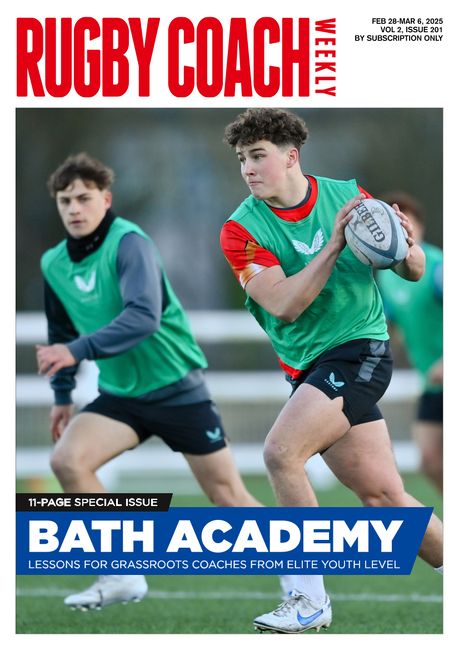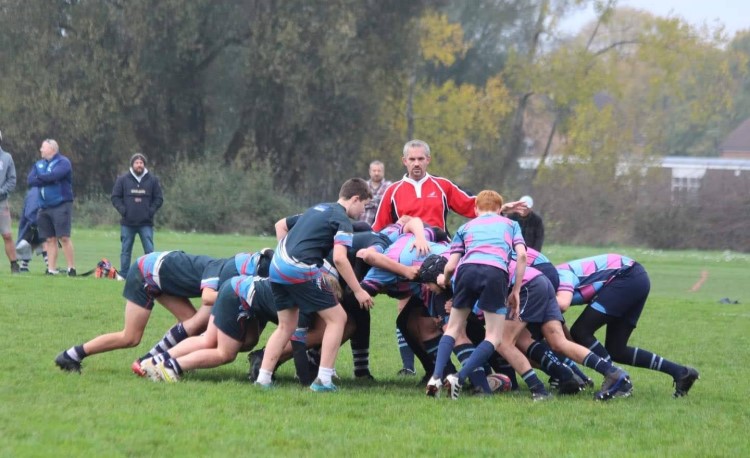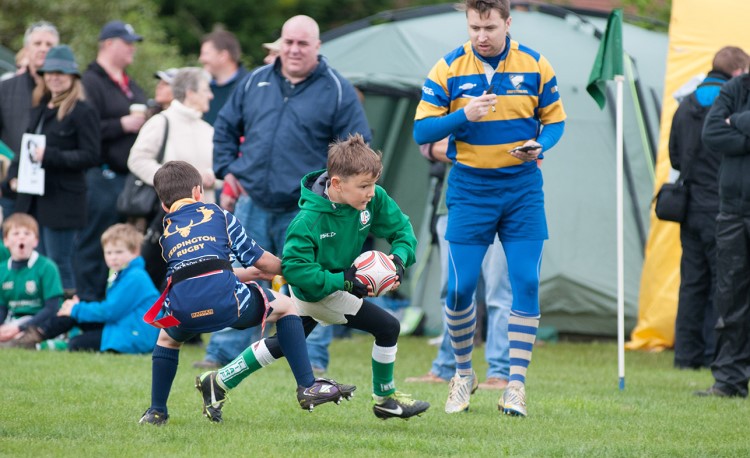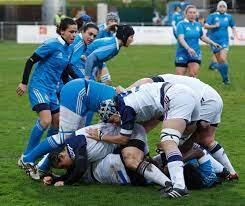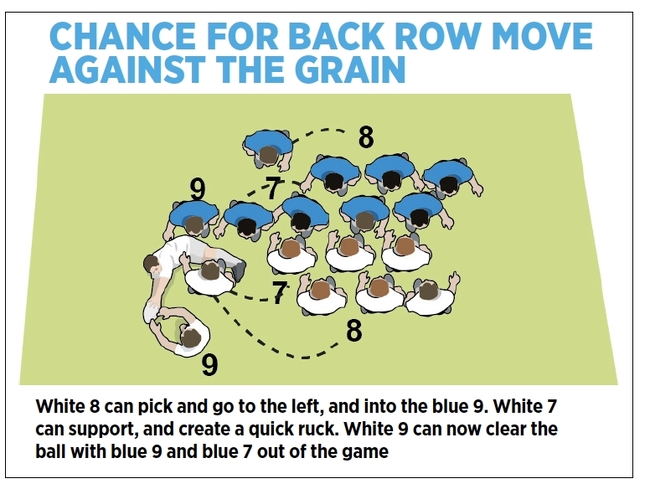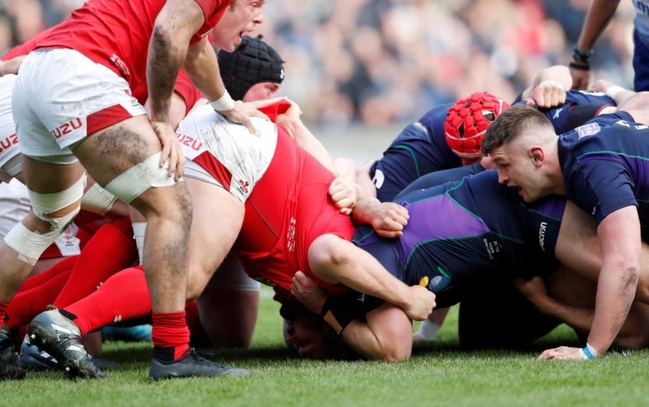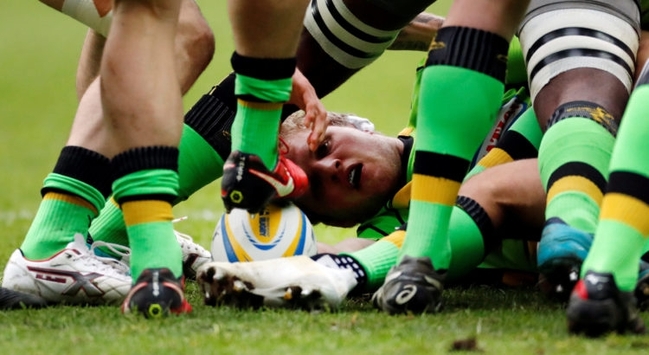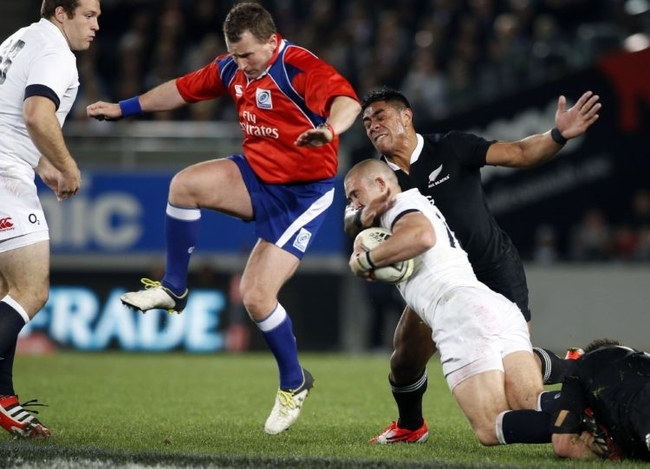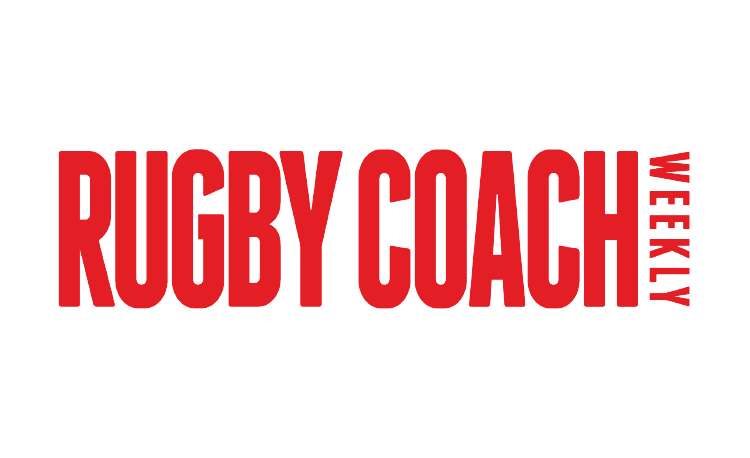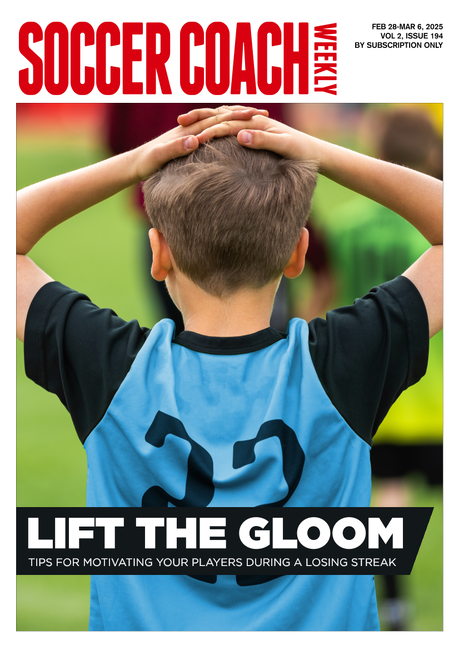Taking the fear out of refereeing a rugby match
Unless you are extremely lucky, and particularly if you're a youth team coach, you or one of your fellow coaches will be refereeing every home game. This can be be stressful and frustrating so use these rugby coaching tips to help.

The Laws
Have a list of the laws that are applicable to the age group you are refereeing, plus some other key areas of the game. (I like to keep a printed sheet, possibly photocopies, with me.) Then, with the other team's coach, confirm the laws so they can communicate any variations to their team.
Common grey areas:
The Pitch
Problems can often occur when the pitch is redefined for younger players, e.g. a pitch is divided into halves or quarters. The main problem is often the length of the dead ball area. How many times have tries been scored amongst the spectators?
Though a line would be ideal, you can use a few cones, tracksuit tops or trainers instead. This makes sense for safety reasons as much as for the players.
I have a few simple policies when I referee. If I think an injury is serious, I stop the game. If the play moves towards an injured player, I stop the game. If I don't feel there is adequate back up to come onto the pitch, I stop the game.
Otherwise, if a player goes down, then I expect the coach to come on immediately to deal with the situation. Meanwhile, I try to keep the game going. If the coach then feels there is a problem, he/she can ask me to stop the game.
In youth rugby, tears are very emotive. They are not always a good indication of a true injury. Tired younger players are prone to tears. It is not cavalier to then carry on with a game, unless a player is injured.
The high tackle is an area that causes controversy, especially amongst players with poor technique. It is generally thought to be difficult to tell the difference between an accidental high tackle and one done with intent to harm. In youth rugby, I suggest taking the following line: most high tackles at this level are accidental.
The law states the following: a player must not tackle (or try to tackle) an opponent above the line of the shoulders. A tackle around the opponent's neck or head is dangerous play.
Two key points arise from the interpretation of the law:
i. Any high tackle deserves a penalty, with an appropriate stoppage of the game to deal with the "tackling" player. A second high tackle by the same player may require a sin bin, substitution or a strong word with the captain or coach.
ii. Any tackle that starts at the shoulder level is very likely to rise up, so don't be afraid to be very tough.
Finally a tip about dangerous play: swinging players around by their collars is a penalty.
The World Rugby Charter on the laws of the game states: "The Laws must be applied in such a way as to ensure that the game is played according to the Principles of Rugby." The main principles are to be fair, consistent, with the aim of rewarding skilful play.
Ideally the referee will have a strong knowledge of the game, but in practice this is not always going to be the case. Therefore the referee needs to manage the game as fairly as possible with what they know, and want to learn to improve for the next game.
Click here for referee pointers for novice rugby referees.

1. Before the match
The Laws
Have a list of the laws that are applicable to the age group you are refereeing, plus some other key areas of the game. (I like to keep a printed sheet, possibly photocopies, with me.) Then, with the other team's coach, confirm the laws so they can communicate any variations to their team.
Common grey areas:
-
Scrum-half positioning – for instance, are they preventing fair release of the ball from the back of the scrum?
-
What constitutes a high tackle?
-
And, in youth rugby, what constitutes a hand-off?
The Pitch
Problems can often occur when the pitch is redefined for younger players, e.g. a pitch is divided into halves or quarters. The main problem is often the length of the dead ball area. How many times have tries been scored amongst the spectators?
Though a line would be ideal, you can use a few cones, tracksuit tops or trainers instead. This makes sense for safety reasons as much as for the players.
2. Injuries
I have a few simple policies when I referee. If I think an injury is serious, I stop the game. If the play moves towards an injured player, I stop the game. If I don't feel there is adequate back up to come onto the pitch, I stop the game.
Otherwise, if a player goes down, then I expect the coach to come on immediately to deal with the situation. Meanwhile, I try to keep the game going. If the coach then feels there is a problem, he/she can ask me to stop the game.
In youth rugby, tears are very emotive. They are not always a good indication of a true injury. Tired younger players are prone to tears. It is not cavalier to then carry on with a game, unless a player is injured.
3. High tackles
The high tackle is an area that causes controversy, especially amongst players with poor technique. It is generally thought to be difficult to tell the difference between an accidental high tackle and one done with intent to harm. In youth rugby, I suggest taking the following line: most high tackles at this level are accidental.
The law states the following: a player must not tackle (or try to tackle) an opponent above the line of the shoulders. A tackle around the opponent's neck or head is dangerous play.
Two key points arise from the interpretation of the law:
i. Any high tackle deserves a penalty, with an appropriate stoppage of the game to deal with the "tackling" player. A second high tackle by the same player may require a sin bin, substitution or a strong word with the captain or coach.
ii. Any tackle that starts at the shoulder level is very likely to rise up, so don't be afraid to be very tough.
Finally a tip about dangerous play: swinging players around by their collars is a penalty.
4. Knowledge versus fairness
The World Rugby Charter on the laws of the game states: "The Laws must be applied in such a way as to ensure that the game is played according to the Principles of Rugby." The main principles are to be fair, consistent, with the aim of rewarding skilful play.
Ideally the referee will have a strong knowledge of the game, but in practice this is not always going to be the case. Therefore the referee needs to manage the game as fairly as possible with what they know, and want to learn to improve for the next game.
Click here for referee pointers for novice rugby referees.
Newsletter Sign Up
Coaches Testimonials

Gerald Kearney, Downtown Las Vegas Soccer Club

Paul Butler, Florida, USA

Rick Shields, Springboro, USA

Tony Green, Pierrefonds Titans, Quebec, Canada
Subscribe Today
Be a more effective, more successful rugby coach
In a recent survey 89% of subscribers said Rugby Coach Weekly makes them more confident, 91% said Rugby Coach Weekly makes them a more effective coach and 93% said Rugby Coach Weekly makes them more inspired.
Get Weekly Inspiration
All the latest techniques and approaches
Rugby Coach Weekly offers proven and easy to use rugby drills, coaching sessions, practice plans, small-sided games, warm-ups, training tips and advice.
We've been at the cutting edge of rugby coaching since we launched in 2005, creating resources for the grassroots youth coach, following best practice from around the world and insights from the professional game.


